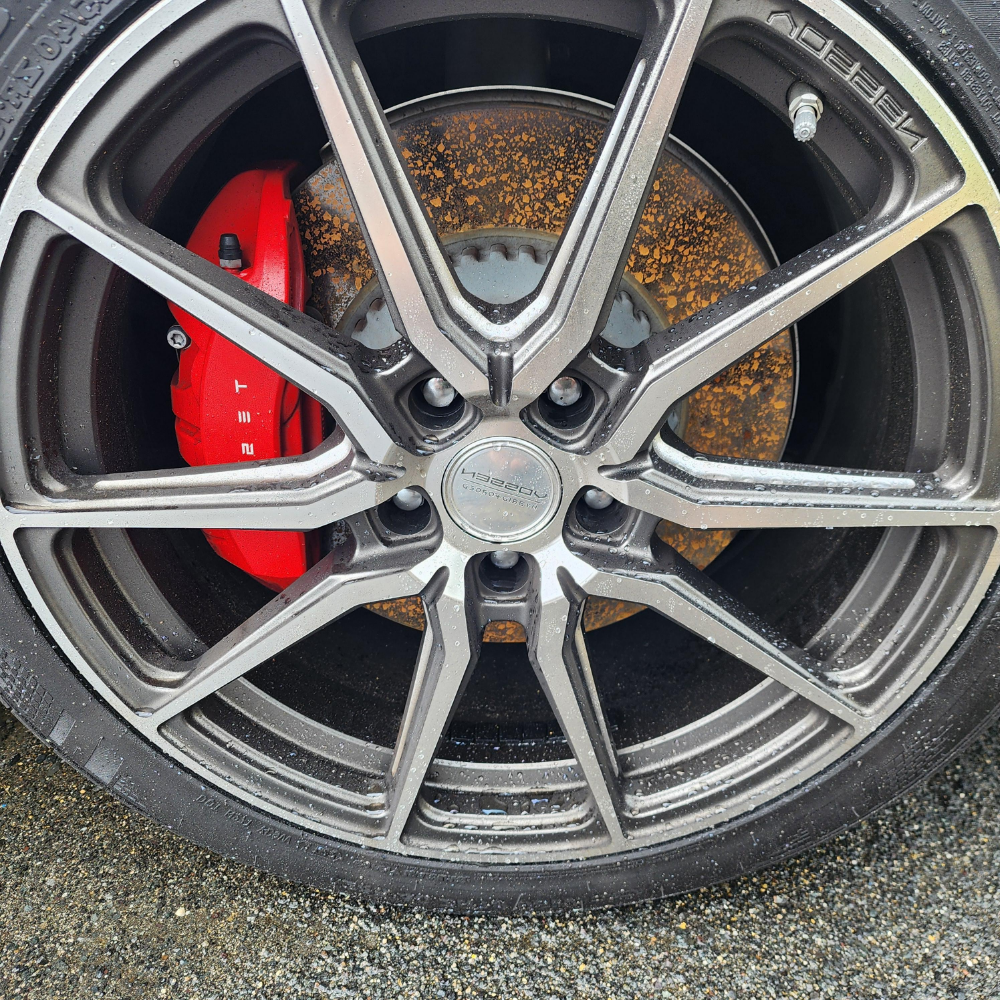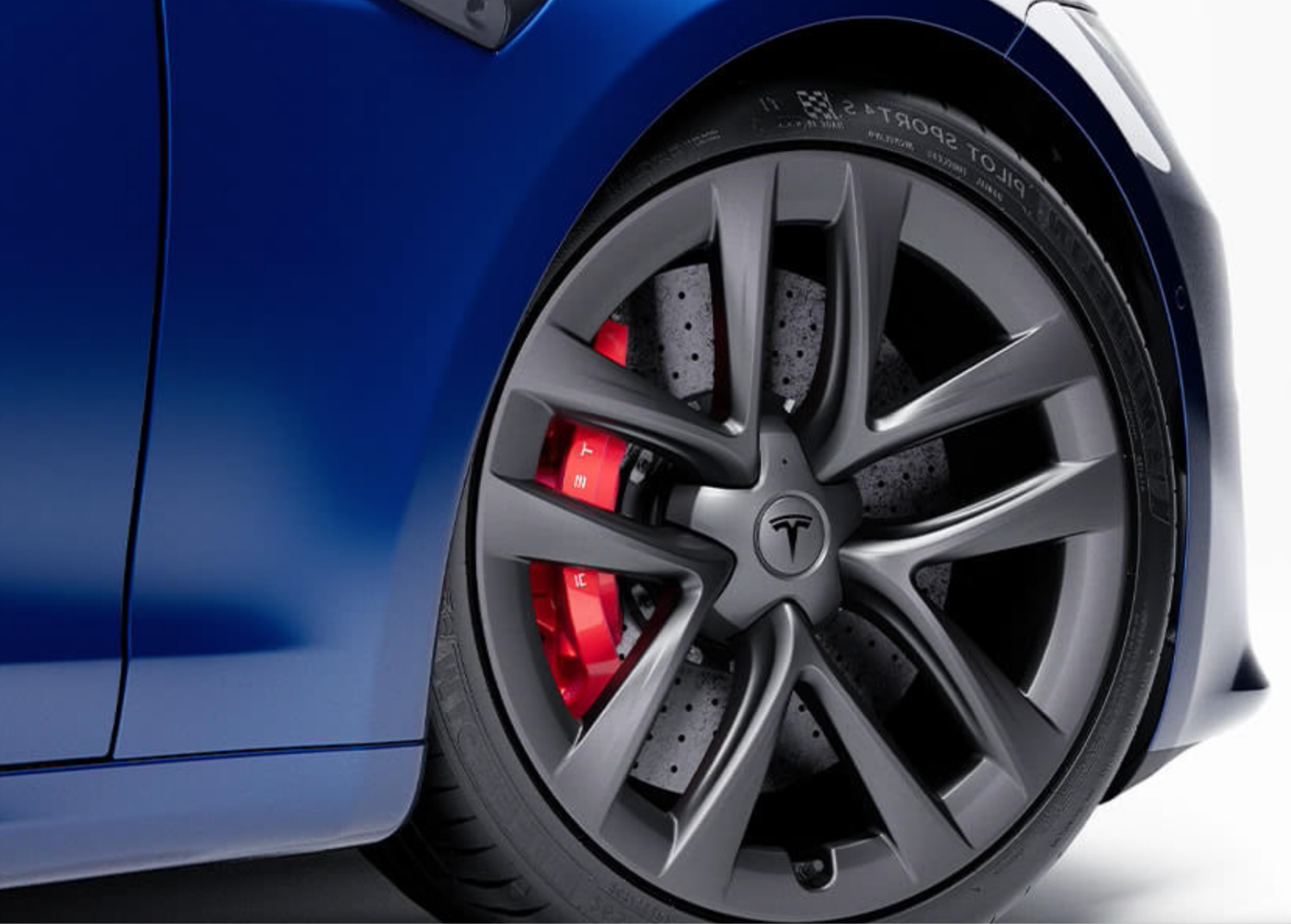If you drive a Tesla Model 3 or Model Y, you may have noticed an odd but common sound — the brakes squeaking. You are not alone. Many Tesla owners report brake noise, especially at low speeds or after rain. While it can sound worrying, squeaky Tesla brakes are usually more of an annoyance than a serious issue.
In this article, we will explain what causes the squeaking, how Tesla brakes compare to other EV brands like Polestar and BYD, and what to expect when it comes to brake maintenance, cost, and replacement intervals.
Why Do Tesla Brakes Squeak?
There are a few common reasons Tesla brakes start to squeak, especially on the Model 3 and Model Y:
- Surface rust on the rotors: A light layer of rust can build up overnight, particularly in humid or wet weather. Since regenerative braking handles most of the deceleration, the physical brakes are not used often enough to keep the rotors clean.
- Glazed brake pads: Light or infrequent braking can cause the pads to become polished and noisy.
- Brake dust and grime: Dust and debris can get trapped between the pads and rotors, leading to squeaks during braking.
- Quieter cabin noise: Tesla cabins are very quiet, so small brake noises stand out more than they would in petrol vehicles.

Is It Just Tesla? What About Polestar, BYD, and Other EVs?
Tesla is not the only EV brand that experiences brake noise. In fact, squeaky brakes are common across many electric vehicles. Regenerative braking systems reduce wear on the brakes, but they also allow rust and debris to build up more easily on the rotors.
Polestar 2
Many Polestar 2 owners report similar brake squealing, particularly when reversing or braking lightly in cold or damp conditions. The physical brakes are used less frequently due to strong regenerative settings, which can lead to squeaks.
BYD Atto 3
BYD owners also note brake squeaking, especially in stop-start city driving. High default regen settings mean the pads may not make regular, hard contact with the rotors, which allows rust to form and cause noise.
Hyundai Ioniq 5 and Kia EV6
These models are also known to squeak under light braking, particularly after rain. Some drivers switch to lower regenerative braking settings temporarily to give the brake pads more use and clean the rotors.
So while it might feel like a Tesla-specific issue, squeaky brakes are actually a side effect of how electric vehicles operate.
How Long Do Tesla Brakes Last?
One of the benefits of regenerative braking is that it greatly reduces wear on the pads and rotors. As a result, Tesla Model 3 brakes and Model Y brakes can last well beyond 100,000 km. In some cases, they may even reach 150,000 to 200,000 km depending on how you drive.
This is a huge improvement compared to petrol vehicles, which often need new pads or rotors every 40,000 to 80,000 km.
How Often Do Tesla Brakes Need to Be Replaced?
There is no fixed schedule because brake wear depends on your driving style, how much regenerative braking you use, and local conditions.
However, as a general guide:
- Tesla Model 3 and Model Y: Brake pads may last 100,000 to 150,000 km
- Light-footed city drivers: May see even longer lifespan
- Aggressive drivers or steep terrain: May require earlier servicing
If you hear a grinding sound, feel vibration, or notice your stopping distance increasing, it's time for a brake inspection.
Tesla Brakes Cost: What You Might Pay
Tesla does not list standard pricing for brake services, but based on Australian workshops, you can expect the following:
- Front pads and rotors: $500 to $900
- Rear pads and rotors: $400 to $800
- All four: Around $1,000 to $1,600
Independent Tesla and EV specialists may offer better rates than Tesla service centres. In many cases, only the pads need replacing, and the rotors can be machined rather than fully replaced.
How to Prevent Squeaky Brakes in Your Tesla (or Any EV)
While some squeaking is hard to avoid, you can reduce it with a few easy habits:
- Do a few strong brake applications each week to clean the rotors
- Avoid light, repeated taps on the brake pedal
- Rinse your wheels and brakes regularly to remove dust and grime
- Use a lower regenerative braking setting from time to time, especially after wet weather
These tips apply not only to Tesla vehicles but also to other EVs like BYD, Polestar, and Hyundai.
Final Thoughts
If your Tesla brakes are squeaking, it is usually nothing to worry about. Regenerative braking systems mean the physical brakes are used less, which leads to longer life but also more noise from rust and dust. Most of the time, the squeak disappears after a few firm stops.
Still, if the noise is constant or if you notice any change in braking performance, it is worth having your brakes checked by an EV-qualified mechanic.
If you are in Brisbane and need a brake check or service for your Tesla Model 3, Model Y, or any other EV, feel free to get in touch. We offer reliable inspections, repairs, and replacements for all electric vehicle makes and models.




